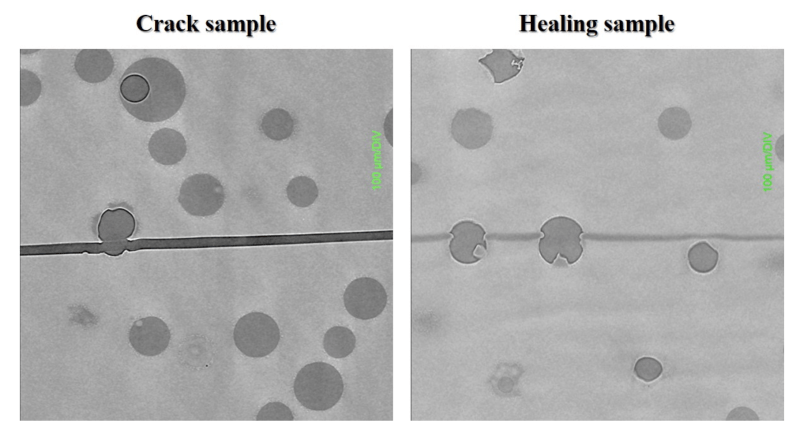The Korea Institute of Science and Technology (KIST) have announced a transparent, self-healing polyimide material designed for smart phone screens. A KIST team from the Composite Materials Applications Research Center led by Dr Yong-chae Jung and a team at Yonsei University’s Electronics Materials Lab led by Dr Hak-soo Han collaborated on this project. While the goal was to improve the material used in folding smart phone screens, the results seem applicable to all glass screens that are prone to cracks and scratches.
This new material can heal itself in 12 hours at room temperature, even faster under UV light. As we understand it, many micro-balloons of flaxseed oil are impregnated on the surface and break open if the material is damaged. Thus liberated, the oil is now free to flow into and fill up the cracks. We imagine it’s like repairing windshield cracks, but on a much smaller scale.
The idea is to eliminate the need for user-added screen protection films and increase the life of your phone screen. But cynical people might wonder if smart phone manufacturers will embrace this new technology with much enthusiasm — after all, if people use their phones longer it might cut into sales. Those with access to academic journals can read the report here.
















I understand how the oil flows into a crack, but how does the oil actually help in fusing the two edges?
Linseed (flax) oil is a drying oil: it polymerizes on exposure to air, and faster in light. Been known for centuries, used for all sorts of applications (paints, oilcloth waterproofing, and many more).
I wonder why they didn’t use some more modern synthetic polymerizing resin.
Cheap, readily available, and has close to the right physical properties to prove the technique in a research setting. That doesn’t mean it wouldn’t be replaced with something else if/when it is developed into a commercial product.
Hope that it doesn’t continually grow darker like it does on cabinetry, having permanent dark brown lines on the screen would be annoying.
Tends to spontaneously combust under certain conditions, too. Ask the cricketers.
Just having a self healing screen on a screen door would be great!
B^)
“cynical people might wonder if smart phone manufacturers will embrace this new technology with much enthusiasm”
The larger issue is if the manufacturing process can be performed at scale and if it can be cheaply integrated into existing systems. I’m sure companies would want to use this if it resolved their issues with fickle folding screens.
Does this mean you can just rub linseed oil on your broken screen to fix it? (You try it first…)
you think im scared? ;)
Yeah, that’s what I want to know too, will it work on my TV or laptop too? Also doesn’t linseed oil produce heat when it cures? Does this mean that I have to worry about my phone bursting into flame when I crack the screen as well?
This also works on bones, and relationships!
Boiled linseed oil to fix a broken phone screen. Crazy concept, especially when it doesn’t last all that long with exposure outdoors.
Self healing screen cracks might not go over too well with the phone service providers. The last time I had insurance on a phone was until Sprint decided their “full coverage” protected against everything except damaged screens, which is the most common part trashed by dropping or getting dunked in water.